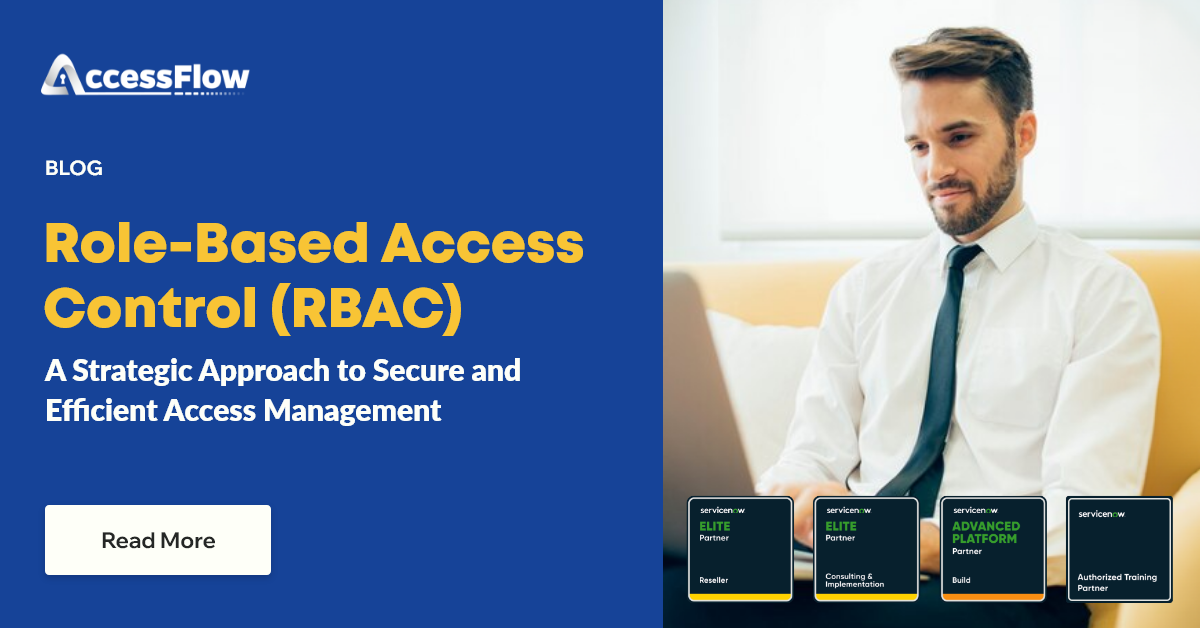
The rapid proliferation of hybrid work, cyber threats, and evolving regulatory requirements in the modern world of work demands organizations to rethink their identity and access management strategies. As per the estimate, 49% of organizations today have at least one employee with access permissions more than what their job duties necessitate. Imagine the chief marketing officer in your organization gaining access to sensitive financial systems without proper checks and internal controls. Enforcement of strict access management policies is mandatory to avoid such scenarios, involving the risk of information misuse, data breaches, and other security vulnerabilities. Role-based access control (RBAC) provides an ideal solution to elevate enterprise security and streamline access control by permitting access to authorized users only.
Modern Identity and Access Management (IAM) solutions can assist you in building strict access controls while handling the complexity of role-based access controls. Built on ServiceNow, AccessFlow is one such converged IAM solution that empowers organizations to safeguard critical data, bolster security, and maintain regulatory compliance through automated RBAC implementation.
Role-based access provides a secure and structured approach to access management, enabling IT teams to leverage user roles as the base criteria for assigning and modifying access rights across the organization. This modern access control mechanism reduces the risk of malicious access attempts, data breaches, and insider threats by restricting users from accessing sensitive data or systems falling outside the purview of their daily job duties or roles. For instance, with RBAC in action, an employee in the marketing team can access only duty-pertinent tools like HubSpot and MailChimp instead of having access to sensitive business systems.
RBAC is also typically used in conjunction with other modern identity security techniques like Segregation of Duties (SoD) and multi-factor authentication (MFA), by enterprises to setup a robust zero-trust security model. Now that we have acquired a deeper understanding of RBAC, let’s understand why it’s critical for modern organizations:
Analyze your existing business requirements
To implement RBAC, perform an in-depth analysis of your organization’s current business needs: job roles, software usage, compliance obligations, and audit requirements. Engage with every department to understand the operational dynamics holistically. This sets the foundation for a tailored RBAC strategy that aligns with your business processes and security objectives.
Define roles and map them to organizational structure
Create proper job roles and assign specific permissions based on the assessment of your organization’s access requirements. The role setup should consider key aspects like job responsibilities, required access levels, and compliance requirements. Avoid common role design pitfalls, such as having too general or overly narrow role definitions and overlapping job roles.
Document the RBAC policy
After determining the role structure and associated permissions, document your newly designed RBAC strategy to avoid any security and compliance issues. Any future changes to the role structure should also be properly documented in this policy. Modern IAM solutions can also assist you in preparing such detailed documents for accurate RBAC implementation.
Create the implementation plan
At this stage, build an implementation plan for your new role-based access framework. Ideally, a phased rollout approach is suitable for RBAC implementation to prevent disruption in routine business operations. Setting up employee awareness and training programs is equally vital to minimize change resistance.
Leverage automation for streamlined RBAC
Implementing modern identity and access management (IAM) solutions can assist you in a speedy and accurate RBAC implementation. These tools enable you to precisely and quickly define and assign permissions to individual users based on their job roles in your organization, thereby improving overall efficiency and security.
Continuously monitor and optimize
Post RBAC implementation, regularly gather feedback from concerned stakeholders, including employees and reporting managers, and assess the effectiveness of your existing access controls. Utilize online surveys and one-to-one interviews as feedback collection mechanisms to identify existing issues in role-permission mappings and fix them through incremental updates in your RBAC policy.
In a nutshell, role-based access control provides a proven and streamlined approach for modern organizations aiming to manage user privileges effectively. Modern IAM solutions like AccessFlow can speed the RBAC implementation by handling the complexities of managing complex user roles and associated permissions. As a SOC 1 Type 2-certified solution, AccessFlow enables organizations to prevent unauthorized access, insider threats, and compliance violations with effective role-based access policies. So, whether you’re just starting out or seeking to elevate your RBAC controls, AccessFlow provides an ideal solution for all your access management needs.
To know more about AccessFlow, and how it elevates your IAM strategy to the next level, reach out to us at information@alcortech.com
 Back to Blog
Back to Blog